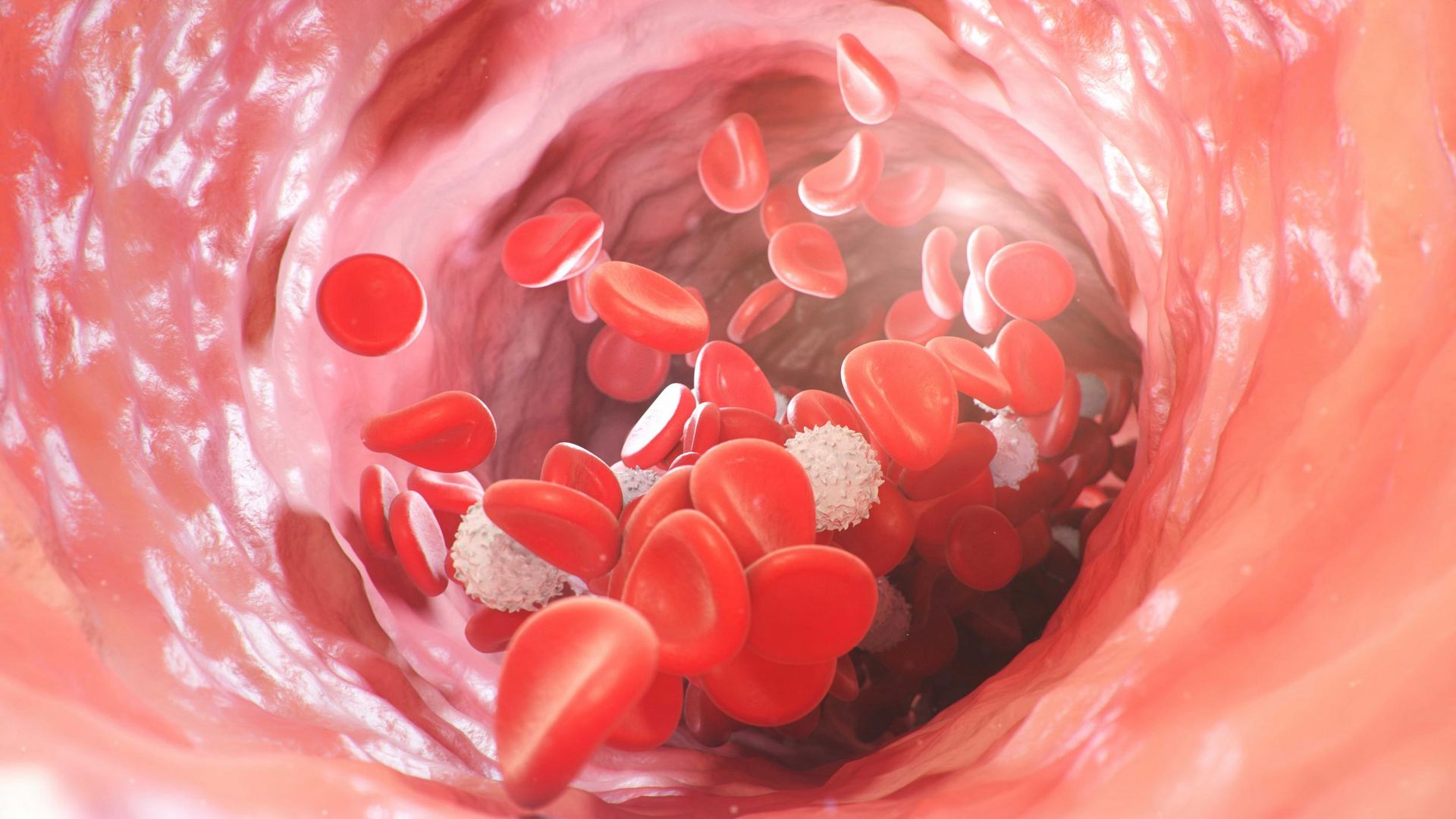博文
癌症免疫治疗中发现罕见的副作用
 精选
精选
||
癌症免疫治疗中发现罕见的副作用
诸平
据德国莱比锡大学(Leipzig University)2025年2月21日提供的消息,癌症免疫治疗中发现罕见的副作用(Rare side effect discovered in cancer immunotherapy)。
研究人员发现并分析了一种创新形式的血癌治疗的罕见但严重的副作用。该研究结果由莱比锡大学医学院(Leipzig University Medicine)、弗劳恩霍夫细胞治疗和免疫学研究所(Fraunhofer Institute for Cell Therapy and Immunology)和科隆大学医院(Cologne University Hospital)的科学家发表在《自然医学》(Nature Medicine)杂志——Till Braun, Michael Rade, Maximilian Merz, Hanna Klepzig, Florian Große, David Fandrei, Nhu-Nguyen Pham, Markus Kreuz, Christina Katharina Kuhn, Florian Kuschel, Dennis Löffler, Jörn Meinel, Eva Heger, Viola Schweinsberg, Natali Pflug, Uwe Platzbecker, Michael Hallek, Udo Holtick, Ulrike Köhl, Christof Scheid, Kristin Reiche, Marco Herling, Tim Richardson. Multiomic profiling of T cell lymphoma after therapy with anti-BCMA CAR T cells and GPRC5D-directed bispecific antibody. Nature Medicine, 2025. DOI: 10.1038/s41591-025-03499-9. Published: 21 February 2025. https://www.nature.com/articles/s41591-025-03499-9
参与此项研究的有来自德国科隆大学医院{Department I of Internal Medicine, Center for Integrated Oncology Aachen-Bonn-Cologne-Duesseldorf (CIO ABCD), University Hospital Cologne, University of Cologne, Cologne, Germany; Mildred Scheel School of Oncology Aachen Bonn Cologne Düsseldorf (MSSO ABCD), Cologne, Faculty of Medicine and University Hospital of Cologne, Cologne, Germany; Institute of Pathology, University Hospital Cologne, University of Cologne, Cologne, Germany; Institute of Virology, University Hospital Cologne, University of Cologne, Cologne, Germany; Department of Dermatology and Venereology, University Hospital Cologne, University of Cologne, Cologne, Germany}、德国莱比锡的弗劳恩霍夫细胞治疗和免疫学研究所IZI(Fraunhofer Institute for Cell Therapy and Immunology IZI, Leipzig, Germany)、德国莱比锡大学医院{Department of Hematology, Cellular Therapy, Hemostaseology, Infectious Diseases, University Hospital of Leipzig, Leipzig, Germany; Cancer Center Central Germany (CCCG) Leipzig-Jena, University Hospital of Leipzig, Leipzig, Germany; Institute for Clinical Immunology, University Hospital of Leipzig, Leipzig, Germany}以及德国德累斯顿/莱比锡可扩展数据分析和人工智能中心{Center for Scalable Data Analytics and Artificial Intelligence (ScaDS.AI), Dresden/Leipzig, Germany}的研究人员。
血癌的各种形式,如淋巴瘤和多发性骨髓瘤,都是源自免疫细胞淋巴细胞的恶性肿瘤疾病。
几年来,CAR - T细胞疗法(CAR T-cell therapies)已经成为淋巴瘤或多发性骨髓瘤复发患者治疗的重要组成部分。患者自身的T淋巴细胞(T细胞){T lymphocytes (T cells)}经过基因修饰,利用嵌合抗原受体(chimeric antigen receptor简称CAR)特异性识别和消除癌细胞。
最近的科学出版物即上述研究结果研究了一个特例。一名63岁的多发性骨髓瘤患者在科隆大学医院接受CAR-T细胞治疗9个月后患上了T细胞淋巴瘤(T-cell lymphoma),这种淋巴瘤不仅出现在血液中,而且出现在皮肤和肠道中。此肿瘤是由用于治疗的转基因T细胞(genetically modified T-cells)发展而来的。
这一合作项目的发起者是莱比锡大学医院的管理高级医师马可·赫林(Marco Herling)和科隆大学医院研究小组负责人迪尔·布劳恩(Till Braun),他们在了解罕见但难以治疗的T细胞淋巴瘤(T-cell lymphomas)方面拥有世界领先的专业知识。“这是CAR-T细胞治疗后首次记录的此类淋巴瘤病例之一。这项研究的发现帮助我们更好地了解治疗的风险,并可能在未来预防它们,”莱比锡大学医院的马克西米利安·默兹(Maximilian Merz)说,他和马可·赫林一起作为通讯作者领导了上述的研究。
研究人员发现,不仅仅是T细胞当前的基因变化导致了肿瘤。预先存在的,即患者造血细胞的早期遗传变化也起了作用。研究人员使用了最先进的技术来详细检查肿瘤的发展。下一代测序是一种分析DNA和RNA序列的高通量技术,用于分析这种现象。全基因组测序用于鉴定遗传改变,而单细胞RNA测序分析CAR-T细胞的转录组以研究基因和信号通路。
更精确地确定副作用的风险因素(Determining risk factors for side effects more precisely)
这些方法已经在莱比锡大学医院马克西米利安·默兹工作组和弗劳恩霍夫IZI(Fraunhofer IZI)的克里斯汀·赖切(Kristin Reiche)工作组的密切合作下建立起来。临床医生和CAR-T细胞治疗领域的基础科学家之间的密切合作,使得在很短的时间内分析病例成为可能。莱比锡大学医院是欧洲治疗多发性骨髓瘤CAR-T细胞和T细胞淋巴瘤的领先中心之一。莱比锡大学医院血液学、细胞治疗、血液学和感染学科(Department of Hematology, Cell Therapy, Hemostaseology and Infectiology at Leipzig University Hospital)的高级医师马克西米利安·默兹说:“该病例为创新免疫疗法后CAR - T细胞淋巴瘤的出现和发展提供了有价值的见解,并显示了遗传前体对这种可能的副作用的重要性。”
研究人员正在计划进一步的科学研究,以更好地了解类似的病例,并能够更准确地确定风险因素。其目的是在未来能够预测和预防CAR-T细胞治疗后的副作用,目前CAR-T细胞治疗的应用越来越广泛。
在第二篇科学论文中,CAR-T细胞治疗后继发性肿瘤的高度相关性已经变得清晰。同一个研究小组在2月中旬向高级期刊《白血病》(Leukemia)提交了一份手稿,系统地总结了这名患者的病例,以及全球其他9例已发表的CAR-T细胞T细胞淋巴瘤病例。通常情况下,专家们需要几周到几个月的时间来接受一篇科学论文的发表。在这种情况下,手稿在一天内被接受发表。“重要的是要建立一个真正的、基于数据的意识,认识到这种并发症的罕见性,即远低于1%,以及它产生的机制,”马可·赫林强调说。
本研究得到了imSAVAR项目{imSAVAR project, which received funding from the Innovative Medicine Initiative 2 Joint Undertaking (JU) under grant agreement no. 853988. The JU receives support from the European Union’s Horizon 2020 research and innovation program and EFPIA and JDRF INTERNATIONAL.}、欧盟CERTAINTY项目{EU CERTAINTY project funded by the European Union (grant agreement no. 101136379)}、德国癌症援助{Deutsche Krebshilfe through a Mildred Scheel Nachwuchszentrum scholarship (grant no. 70113307)}、桑德基金会{Sander Stiftung (grant no. 2023.084.1)}、德国研究基金会{German Research Foundation/DFG (seq-costs in projects, grant no. PF1028/1-1); German Research Foundation SPP μbone}、德国约瑟-卡雷拉斯白血病基金会{German José-Carreras Leukemia Foundation (grant no. DJCLS 01 R_2023); German José-Carreras Leukemia Foundation (grant no. DJCLS 08 R/2023)}、莱比锡大学医学院{Faculty of Medicine of the University of Leipzig (endowed Professorship)}、免疫T-ME联盟{ImmuneT-ME consortium (EPPERMED2024-522)}、国际骨髓瘤协会颁发的转化研究奖(Translational Research Award from the International Myeloma Society)、T2Evolve (Innovative Medicine Initiative 2 Joint Undertaking grant no. 945393)、SaxoCell (BMBF Clusters4Future, grant no. 03ZU111MB/03ZU111MD)以及DAAD项目{DAAD project grant no. 57616814 (SECAI, School of Embedded Composite AI)}的资助或支持。
上述介绍仅供参考,欲了解更多信息敬请注意浏览原文和相关报道。
University of Leipzig. Rare Side Effect of Cancer Immunotherapy. Press release 2025/030 from 21/02/2025
Chimeric antigen receptor (CAR) T cells and bispecific T cell engagers have become integral components in the treatment of relapsed/refractory multiple myeloma. We report a 63-year-old male who received ciltacabtagene autoleucel CAR T cells and the GPRC5D × CD3 bispecific talquetamab for early relapse of his multiple myeloma. Nine months after CAR T therapy, he developed a symptomatic leukemic peripheral T cell lymphoma with cutaneous and intestinal involvement. Longitudinal single-cell RNA and T cell receptor sequencing of peripheral blood and bone marrow revealed two hyperexpanded CAR-carrying T cell clones. These expanded clones exhibited an exhausted effector-memory T cell transcriptional signature, and the neoplasm itself was sensitive to dexamethasone treatment. The immunophenotypic and transcriptional alterations of these abnormal T cells resembled those of T-large granular lymphocytic leukemia. Spatial transcriptomes of skin lesions confirmed the aberrant CAR-expressing T cells. Whole-genome sequencing revealed three distinct integration sites, within the introns of ZGPAT, KPNA4 and polycomb-associated noncoding RNAs. Before and after CAR T whole-genome analyses implicated clonal outgrowth of a TET2-mutated precursor propelled by additional subclone-specific loss of heterozygosity and other secondary mechanisms. This case highlights the evolution of a CAR-carrying peripheral T cell lymphoma following CAR T cell and bispecific T cell engager therapy, offering critical insights into the clonal evolution from a predisposed hematopoietic precursor to a mature neoplasm.
https://wap.sciencenet.cn/blog-212210-1474395.html
上一篇:极低摩擦的新固体润滑剂
下一篇:科学家开发出延长寿命和逆转脑损伤的药物
